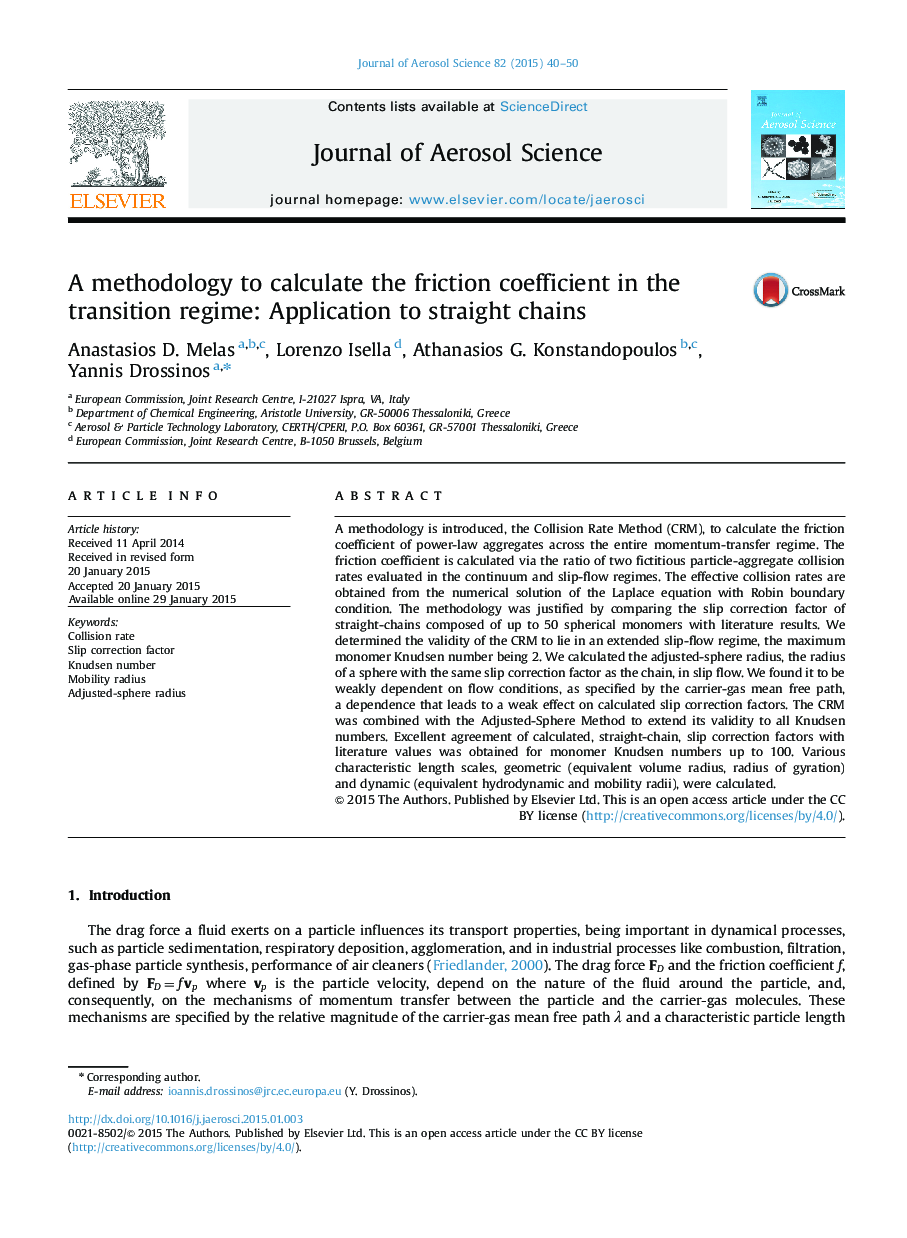| Article ID | Journal | Published Year | Pages | File Type |
|---|---|---|---|---|
| 6344485 | Journal of Aerosol Science | 2015 | 11 Pages |
â¢The Collision Rate Method is developed to calculate friction coefficients of power-law aggregates.â¢The friction coefficient of straight chains is calculated over the entire momentum transfer regime.â¢Straight-chain mobility equivalent and adjusted-sphere radii are analyzed.â¢The adjusted-sphere radius is found to depend weakly on flow conditions.
A methodology is introduced, the Collision Rate Method (CRM), to calculate the friction coefficient of power-law aggregates across the entire momentum-transfer regime. The friction coefficient is calculated via the ratio of two fictitious particle-aggregate collision rates evaluated in the continuum and slip-flow regimes. The effective collision rates are obtained from the numerical solution of the Laplace equation with Robin boundary condition. The methodology was justified by comparing the slip correction factor of straight-chains composed of up to 50 spherical monomers with literature results. We determined the validity of the CRM to lie in an extended slip-flow regime, the maximum monomer Knudsen number being 2. We calculated the adjusted-sphere radius, the radius of a sphere with the same slip correction factor as the chain, in slip flow. We found it to be weakly dependent on flow conditions, as specified by the carrier-gas mean free path, a dependence that leads to a weak effect on calculated slip correction factors. The CRM was combined with the Adjusted-Sphere Method to extend its validity to all Knudsen numbers. Excellent agreement of calculated, straight-chain, slip correction factors with literature values was obtained for monomer Knudsen numbers up to 100. Various characteristic length scales, geometric (equivalent volume radius, radius of gyration) and dynamic (equivalent hydrodynamic and mobility radii), were calculated.
Graphical abstractDownload high-res image (139KB)Download full-size image
